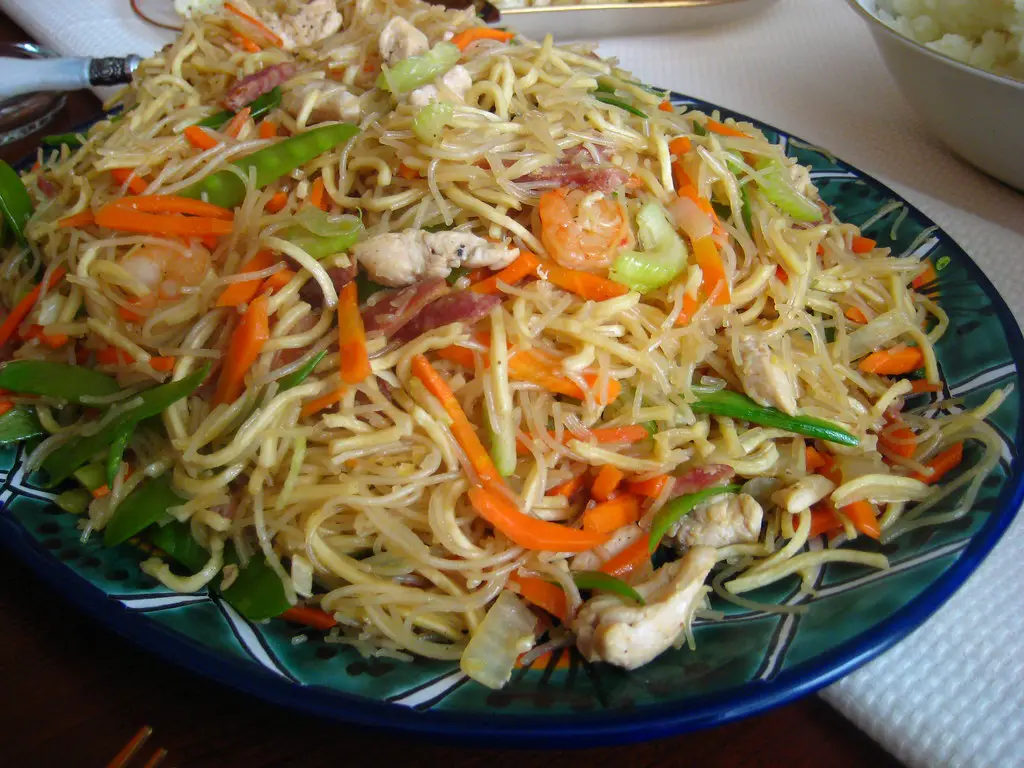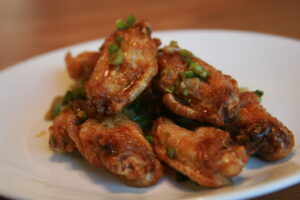Filipino cuisine is a vibrant tapestry of flavors, reflecting a rich history and diverse cultural influences. Among the countless dishes that embody the essence of Filipino gastronomy, pancit stands out as a beloved and iconic culinary creation. Pancit, a noodle dish that has become a staple in Filipino households, holds a special place in the hearts and palates of Filipinos. This article takes you on a delightful journey through the world of Filipino pancit recipes, exploring the history, cultural significance, and diverse variations of this delectable dish.
Historical Roots of Pancit:
The roots of pancit in Filipino culture can be traced back to ancient times. Historians believe that Chinese traders introduced noodles to the archipelago, and over the centuries, Filipinos adapted and transformed this humble ingredient into a variety of dishes. Pancit has evolved into a symbol of longevity and prosperity, making it a popular choice during festive occasions, birthdays, and other celebrations.
Cultural Significance:
Pancit is more than just a meal; it is a cultural experience that brings people together. The act of preparing and sharing pancit is deeply ingrained in Filipino hospitality. It is a dish that transcends social and economic boundaries, as it is enjoyed by people from all walks of life. Whether served during family gatherings, fiestas, or simple meals at home, pancit reflects the Filipino spirit of generosity and communal joy.
Common Ingredients:
While there are countless regional variations of pancit across the Philippines, some key ingredients are commonly found in many recipes. Rice noodles, known as “pancit canton” or “bihon,” are the foundation of most pancit dishes. Other essential components include vegetables such as carrots, cabbage, and green beans, as well as protein sources like chicken, pork, shrimp, or a combination of these.
Regional Variations:
The diversity of Filipino culture is mirrored in the numerous regional variations of pancit. Each province and locality has its own unique twist on this classic dish, incorporating local ingredients and culinary techniques. Some notable regional variations include:
Pancit Canton (Manila): This stir-fried noodle dish from the capital city features a medley of meats, vegetables, and soy-based sauce. It is a flavorful and hearty choice, often enjoyed during birthdays and special occasions.
Pancit Malabon (Malabon): Hailing from the city of Malabon, this version of pancit is known for its thick rice noodles, seafood toppings, and distinctive orange sauce made from achuete (annatto) seeds. It’s a seafood lover’s delight.
Pancit Habhab (Quezon): Originating from the province of Quezon, this pancit variety is traditionally eaten without utensils. Instead, it is “eaten with gusto” directly from a banana leaf. It typically includes minced pork, vegetables, and soy sauce.
Pancit Batil Patung (Tuguegarao): This noodle dish from the northern province of Cagayan features miki noodles, topped with carabao (water buffalo) meat, bean sprouts, and a flavorful broth. A poached egg is often added as a finishing touch.
Pancit Tami (Iloilo): Originating from Iloilo in the Visayas, Pancit Tami showcases thin egg noodles in a savory broth, often served with slices of pork and shrimp. It is a comforting dish enjoyed during rainy days.
These regional variations represent just a fraction of the diverse pancit landscape in the Philippines, highlighting the creativity and culinary expertise of Filipino cooks from different parts of the archipelago.
Traditional Cooking Techniques:
The preparation of pancit involves a combination of traditional cooking techniques that have been passed down through generations. Stir-frying, sautéing, and simmering are common methods used to bring out the rich flavors of the ingredients. The careful balance of salty, savory, and umami flavors is a hallmark of Filipino cuisine, and pancit is no exception.
Pancit in Filipino Festivities:
Pancit holds a special place in Filipino celebrations and rituals. One of the most common traditions is the belief that serving pancit during birthdays symbolizes long life and prosperity. The length of the noodles is thought to represent the length of one’s life, and cutting the noodles is considered inauspicious. As a result, birthday celebrants often enjoy pancit in unbroken strands, emphasizing the wish for a long and blessed life.
Beyond birthdays, pancit is a staple during other festivities such as weddings, fiestas, and holiday gatherings. Its presence on the dining table signifies abundance, unity, and the shared joys of communal feasting.
Modern Twists on Traditional Pancit:
While traditional pancit recipes continue to be cherished, modern twists and innovative variations have emerged, catering to evolving tastes and culinary trends. Some chefs and home cooks experiment with fusion flavors, incorporating international influences to create unique and exciting pancit dishes. Examples include teriyaki chicken pancit, spicy coconut curry pancit, or even vegetarian and vegan pancit options for those with dietary preferences.
Pancit in the Global Culinary Scene:
As Filipino cuisine gains recognition on the global stage, so does the popularity of pancit. Filipino restaurants abroad often feature various pancit dishes on their menus, introducing international audiences to the diverse and delectable world of Filipino noodles. Food enthusiasts and chefs from different cultures are drawn to the harmonious blend of flavors, textures, and colors that pancit offers, making it a standout dish in the global culinary landscape.
In every strand of pancit noodles, one can taste the essence of Filipino culture – a harmonious blend of tradition, creativity, and community. From the bustling streets of Manila to the provincial kitchens of the Visayas and Mindanao, pancit remains a symbol of Filipino identity and the warmth of shared meals. As we continue to savor the rich tapestry of Filipino cuisine, let us celebrate the timeless allure of pancit and the stories it tells with every savory bite.
Tips for Perfecting Your Pancit:
For those eager to embark on their own culinary journey into the world of Filipino pancit, mastering the art of preparation is key. Here are some tips to ensure your pancit dish is a resounding success:
Quality Ingredients: Begin with fresh and high-quality ingredients. Whether it’s the noodles, meats, or vegetables, using fresh produce enhances the overall flavor of your pancit.
Noodle Soaking: If you’re using dried noodles, soak them in warm water until they become pliable but not overly soft. This ensures they cook evenly during stir-frying.
Prep Work: Mise en place is crucial. Chop and prepare all your ingredients before you start cooking. This not only streamlines the cooking process but also prevents overcooking or burning as you won’t be scrambling to chop ingredients while the heat is on.
Balanced Flavors: Achieve a harmonious balance of flavors by tasting and adjusting the seasoning throughout the cooking process. A combination of soy sauce, fish sauce, and a touch of calamansi or lime juice can add depth to your dish.
Customization: Don’t be afraid to customize your pancit based on personal preferences. Experiment with different meats, seafood, or even plant-based proteins for a unique twist. Add more vegetables for a healthier version, or play with the level of spiciness to suit your taste.
Garnishes: Elevate your pancit with fresh garnishes like chopped green onions, cilantro, or a squeeze of calamansi before serving. These finishing touches add brightness and freshness to the dish.
Presentation: While pancit is often a humble and comforting dish, presenting it with care adds to the overall dining experience. Consider serving it on a banana leaf or a vibrant platter to enhance its visual appeal.
Preserving Tradition in a Modern Kitchen:
In the hustle and bustle of modern life, traditional Filipino cooking methods might seem time-consuming. However, the essence of pancit can be preserved even in a busy kitchen. Pre-packaged pancit mixes are readily available in many grocery stores, providing a convenient alternative for those short on time. These mixes often include a variety of seasonings and dried vegetables, allowing you to recreate the flavors of traditional pancit with ease.
For those who prefer a hands-on approach, meal prepping can be a game-changer. Prepare large batches of pancit components – from sliced meats to julienned vegetables – and store them in the freezer. This way, you can whip up a delicious pancit meal in no time, preserving the tradition of this iconic dish even in the midst of a hectic schedule.
The Evolution of Pancit:
As Filipino cuisine continues to evolve and capture the attention of the global culinary scene, the evolution of pancit remains ongoing. Creative chefs and home cooks continue to experiment with flavors, incorporating diverse influences from around the world. Fusion pancit dishes, combining Filipino flavors with elements of other international cuisines, are gaining popularity and contributing to the ever-expanding repertoire of pancit variations.
The rise of food bloggers, social media influencers, and cooking enthusiasts sharing their pancit creations online has also played a role in promoting the diversity and appeal of Filipino noodles. Instagram and YouTube are filled with visually stunning images and videos of pancit dishes, inspiring people worldwide to try their hand at recreating these flavorful masterpieces in their own kitchens.
A Noodle Legacy Worth Savoring:
In conclusion, the Filipino pancit is more than just a dish; it is a celebration of culture, tradition, and the joy of shared meals. Its enduring popularity, both within the Philippines and on the global stage, speaks volumes about the universal appeal of this humble yet versatile noodle creation.
Whether you’re savoring a comforting bowl of pancit canton on a rainy day, enjoying a festive serving of pancit malabon during a birthday celebration, or exploring innovative variations in a modern culinary setting, the essence of pancit remains deeply rooted in the Filipino experience. It is a dish that embodies the spirit of hospitality, the richness of Filipino history, and the creativity of a diverse and vibrant culinary landscape.
So, the next time you find yourself in the kitchen, consider embarking on your own pancit adventure. Whether you’re following a cherished family recipe, putting a modern twist on a classic, or creating something entirely new, you’ll be contributing to the ongoing legacy of Filipino pancit – a noodle tradition that continues to captivate hearts and taste buds around the world.




